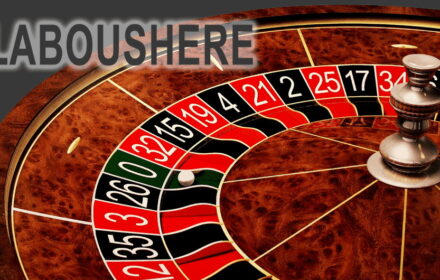The Fibonacci strategy in casinos originated from 13th-century mathematics and smoothly transitioned into gambling. The sequence 1-1-2-3-5-8-13 attracts players with its simplicity and logic. It does not promise guaranteed winnings but helps manage bets and reduce the strain on the bankroll during a losing streak. This system is particularly commonly used in casinos in roulette, where players work with clear probabilities and can build a disciplined progression.
The Mechanics of the Fibonacci Strategy in Roulette
The casino strategy is based on increasing the bet after each loss according to the Fibonacci sequence. The initial bet is equal to one unit. In case of failure, the next bet amount is the sum of the two previous ones. For example: 1 → 1 → 2 → 3 → 5 → 8. After a win, the player steps back two levels, reducing the risk of losing the bankroll.
Its application in roulette is convenient due to the clearly defined chances of outcomes. Simple bets like “red/black,” “even/odd” provide approximately 48.6% probability in European wheels. Each spin is statistically independent of the previous one, but this method in casinos creates a manageable system and controls the depth of negative progression.
Mathematical Logic and Risk
The Fibonacci sequence grows slower than the classic Martingale system, where the bet is doubled. This reduces the strain on the bankroll and provides more chances to survive a long series of losses. For example, after ten failures, Martingale would require 1024 units, while Fibonacci in a casino would only need 89. The difference is significant, especially with a limited budget.
The house edge in roulette is 2.7% for the European version and 5.26% for the American version. Any betting system, including the Fibonacci system in roulette, cannot eliminate this mathematical advantage, but it can structure the game and reduce emotional pressure.
Applying the Method in Other Gambling Games
The strategy can be adapted not only to roulette but also to other popular gambling games. Its essence is to control the bet growth through a mathematical sequence, avoiding sharp jumps after losses. This approach helps maintain the bankroll within a predetermined budget and extend the gaming session. The effectiveness of the method depends on the rules and probabilities of each specific game, so it is important to consider the characteristics of the chosen discipline.
Blackjack
Many people test how the Fibonacci system works in blackjack. Here, the sequence helps distribute the bankroll for each hand. The player increases the amount after a loss and decreases it after a win. However, the fluctuation of odds in blackjack depends on the cards, reducing the predictability of the system.
Baccarat
In baccarat, the Fibonacci strategy in casinos is applied to bets on “banker” or “player.” The progression works similarly: a loss moves forward in the sequence, while a win moves back two steps.
Craps
In the game of craps, the system helps determine the bet size on “Pass Line” or “Don’t Pass.” The fast pace of dice rolls requires clear self-discipline to maintain the sequence.
Slots
The Fibonacci system in casinos is almost ineffective in slots. The absence of fixed probabilities on spins and high variance make the progression hard to control.
Alternatives and Modifications of the Fibonacci Strategy in Casinos
Experienced players adapt the method to their own playing style and acceptable risk level. Changes are aimed at maintaining control over the bankroll and increasing flexibility when the game situation changes.
Variations and adaptations of the method:
- Fibonacci reverse – moving forward in the sequence after a win and backward after a loss. Suitable for positive progression in bets when a lucky streak needs to be reinforced.
- Combining with a maximum step limit – protecting the bankroll from excessive growth.
- Starting the game with fixed amounts when reaching a planned income.
Such modifications help reduce the risk during long losing streaks and maintain stability when the outcome changes. Skillful use of these options enhances control and makes the strategy more manageable.
Useful Tips for Applying the Fibonacci Strategy in Casinos
Effective application of the method requires strict planning and constant monitoring of the gaming process. Clear discipline allows minimizing risk and preserving the bankroll even during prolonged losing streaks.
Practical recommendations:
- Choose the minimum bet based on the size of the bankroll and the potential length of the losing streak.
- Record the sequence on paper or in an app to stay on track amidst emotions.
- Stop when reaching a pre-set limit of wins or losses.
- Consider the house edge and do not expect guaranteed profits.
- Avoid high-risk sectors of the roulette with low odds.
Following these principles helps maintain control over the game and avoid impulsive decisions. A thoughtful tactic increases the chances of keeping the balance longer and analyzing the result of each step.
Conclusion
The Fibonacci strategy in casinos creates a clear structure of bets, helps endure long losing streaks, and control the bankroll. It does not eliminate the house advantage but transforms chaotic gameplay into a manageable process. With discipline and a sound approach, the sequence can reduce the risk of sudden loss of funds and provide more time to analyze chances and adjust actions.
 en
en  de
de  ar
ar  es
es  nl
nl  hi
hi  fr
fr  it
it  pt
pt  el
el 











